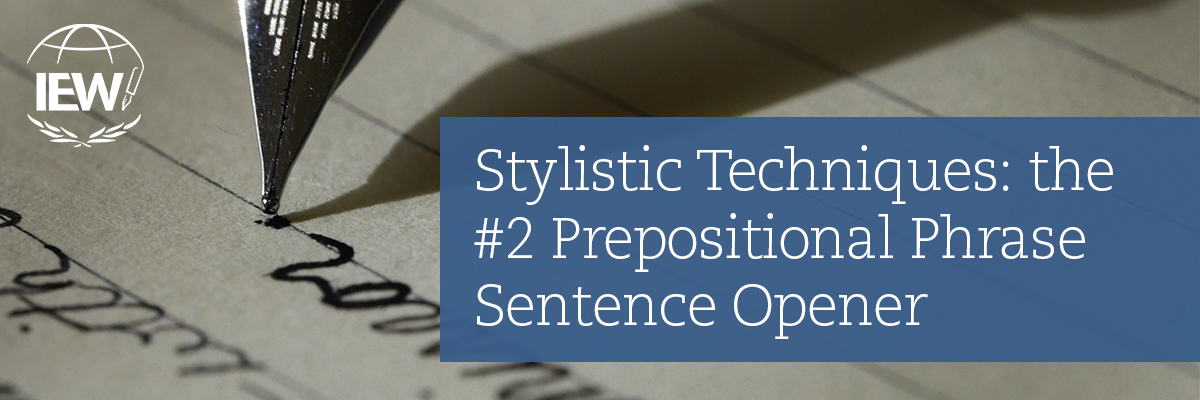In earlier blog posts we have discussed the basic dress-ups and how to introduce them to your students. For the next series of blog posts, we will turn our attention to the sentence openers, the second component in the Stylistic Techniques Chart listed on page 171 of Teaching Writing: Structure and Style, Second Edition (TWSS). As you might imagine, sentence openers start sentences.
Today’s blog post will focus on the #2 prepositional opener. Introduced first in the sentence opener progression, this construction follows the pattern: preposition + noun (no verb). While there can be other words between the preposition and the verb, such as an article or adjectives, there will never be a verb.
It is handy if you use manipulatives when you teach prepositions to your younger students. One blog post that speaks specifically about this is “Prepositional Pursuits.” In that post I used a paper bag, a toy dragon, and a stuffed sheep to illustrate prepositional phrases at work, but you could just as easily use a cereal box and another smaller object. For the sake of illustration, let’s say it’s this toy tree frog:
Using a shoe box, cereal box, or other container, I could grab Mr. Frog and help my class come up with some prepositional phrases by modeling the following activity:
The frog hops ...
- along the edge of the box
-
under the box
-
around the box
-
inside the box
-
beneath the box
-
astride the box
-
beside the box
-
near the box
-
over the box
-
past the box
Use that instructional time to create a prepositional word list that your students can refer to as they write. In Structure and Style for Students, Andrew Pudewa helps students learn these prepositions by having the entire class act them out. It’s a lot of fun that helps the learning sink in! You can view a snippet of him working with his students in this video clip.
Keep in mind that not all prepositions lend themselves well to physical manipulation, including prepositions such as concerning, regarding, according to, etc. Then after you’ve created some prepositions and played with making some prepositional phrases, it’s time to create some sentences that begin with one. To indicate it is a #2 sentence opener, you can either mark the number 2 in brackets right before writing it or indicate it in the left margin of the paper on the same line in which it appears. Taking just a few of these, you could create sentences such as the following:
-
[2] Along the edge of the box, the frog carefully hopped.
-
[2] Beneath the box the frog burrowed.
-
[2] Inside the box the frog hides from predators.
-
[2] Past the box the frog raced to snatch the fly.
Let’s talk a bit about punctuation. Looking at the sample sentences above, you will note that the first sentence has a comma while the other three do not. In general, a prepositional phrase of five or more words takes a comma. If there are fewer than five, however, the comma is optional. Also note that the first example sentence actually comprises two prepositional phrases: “Along the edge” and “of the box.” Reserve the comma until after the final prepositional phrase.
In the Structure and Style syllabus, infinitives composed of the word “to” and a verb are counted as #2 sentence openers. An infinitive is a verbal construction, which just means that it’s a verby-looking construction that’s not functioning as a verb. Here’s an example of one:
[2] To escape becoming the rat snake’s lunch, the frog hopped high up into the air.
Hopefully this blog post has helped you feel more confident about teaching this type of sentence opener to your students. In the next blog post, we’ll investigate the #3 sentence opener: the -ly adverb. See you soon!
|
Jennifer Mauser has always loved reading and writing and received a B.A. in English from the University of Kansas in 1991. Once she and her husband had children, they decided to homeschool, and she put all her training to use in the home. In addition to homeschooling her children, Jennifer teaches IEW classes out of her home, coaches budding writers via email, and tutors students who struggle with dyslexia. |


